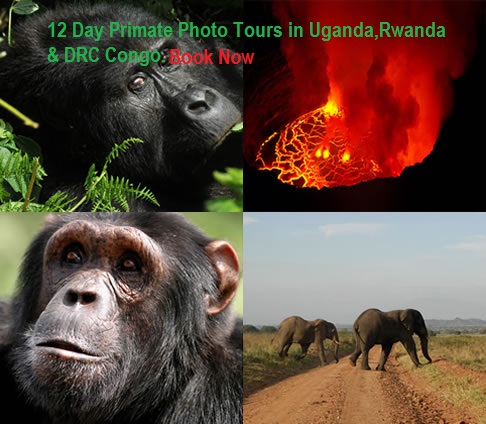Mountain Rwenzori National Park
Hidden in the southwestern part of Uganda, Rwenzori Mountain National Park was established in 1991 and declared a UNESCO World Heritage site in 1994.
It lies along Uganda’s border with Democratic Republic of Congo in close proximity to Virunga National Park. This Park spans three Uganda’s districts including Kabarole, Kasese and Bundibugyo.
It covers a total area of 1000 square kilometers and is home to Africa’s third highest mountain peak, cascading waterfalls, glaciers and lakes along with beautiful plant life.
This Mountain is made up of six glacial peaks and these are Mount Stanley, Mount Gessi, Mount Emin Pasha, Mount Luigi da Savoia, Mount Baker and Mount Speke. Of all the peaks, Mount Stanley is the highest.
Besides the Mountain peaks, this park hosts over 70 mammals and 217 species of birds including 19 Albertine Rift endemic species.
The park’s main habitats consist of bamboo, moorland, Savannah and moist montane forests, tree-heathers and colorful mosses are draped across the mountainside.
This locality features one of the most breathtaking expeditions via its trails that winds through the lush jungles. A trek to the summit of Mergherita (highest) can be finished in about nine to twelve days.
How to get there
There are mainly two routes used to reach Mountain Rwenzori National Park in the Southwestern part of Uganda from Kampala.
The first route(shorter) is about 375 km, it leads you straight to the park’s trailhead at Ruboni from the North via Fort Portal town.
Then, the second route is about 450km from Kampala and winds through Mbarara and Queen Elizabeth National Park.
If not road, you can go by air means – Private charters are often arranged from Kajjansi airstrip or Entebbe airport up to Kasese.
What to do & see in the National Park
Mountain Climbing
Mountain climbing is the main highlight for most of Safaris to Rwenzori Mountains National Park. There are two main hiking trails that lead travelers to the summit as highlighted below:
The Central Circuit Trail:
This seven day challenging tour starts from the trailhead at Mihunga rewarding best hiking experiences to the peaks. From Mihunga, this strenuous route slopes past Nyabitaba to Bujuku valley and then up to the peaks. From the top, view of landscapes and snow peaks are awesome.
Kilembe Trail:
Kilembe trail ascends the southern slopes of Mountain Rwenzori from Kilembe near Kasese town. It takes you past glacial lakes in Nyamwamba valley joining the central circuit at Lake Kitandara.
Nature Walks
While in the Park, you can engage in Nature walks for close encounter with nature and other Wildlife species.
Hiking expeditions head to Lake Muhooma through Buraro chimp forest, it continues further to Karangura through the communities of Kichwamba. You can as well hike to Bundibugyo area through the Bwamba Pass.
Other forest walks are done through the Ruhoni communities along River Mobuku. This trail rewards with views of Baker and Portal peaks.
On a clear day you can also sight the highest peak “Margherita”. You can also behold some species like Squirrels, Vervet monkeys, Chameleon and numerous bird species.
Birding
With its diverse range of bird species, its easy to understand why this Park is listed among Uganda’s top birding hotspots. Some of the species to sight during the excursion are sun-birds, bee-eaters, robins, barbets, long-eared owl to name but a few.
Cultural Encounters
Be part of the cultural trail with the Mihunga community tourism group, this is mainly a cultural tour that exposes you to demonstrations by a traditional healer and cultural dance performances by the locals.
During the Bulembe-Ihandiro Cultural trail, you can meet with the Bakonzo people and the local guide will introduce you to the traditional healer known as Muhima.
You continue further to the local communities for local experiences where you are introduced to the basket weaving and fire making skills.
You will end with a visit to the Kamusonge River treasured by locals for its sweet waters that quenches thirst quickly.
